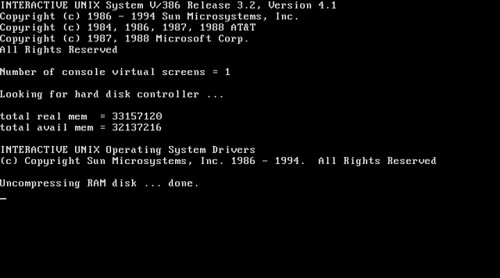The History Guy: History Deserves to Be Remembered
Published 1 Feb 2019During the gilded age ruthless businessmen fought for control of railway lines. The Albany and Susquehanna railroad was another battlefield in the “Railroad wars.” In this episode, The History Guy remembers “the Battle of the Tunnel”.
This is original content based on research by The History Guy. Images in the Public Domain are carefully selected and provide illustration. As images of actual events are sometimes not available, images of similar objects and events are used for illustration.
All events are portrayed in historical context and for educational purposes. No images or content are primarily intended to shock and disgust. Those who do not learn from history are doomed to repeat it. Non censuram.
Patreon: https://www.patreon.com/TheHistoryGuy
The History Guy: History Deserves to Be Remembered is the place to find short snippets of forgotten history from five to fifteen minutes long. If you like history too, this is the channel for you.
Awesome The History Guy merchandise is available at:
teespring.com/stores/the-history-guyScript by THG
#newyork #thehistoryguy #ushistory
April 28, 2020
Robber Barons and the Battle of the Tunnel
ESR on “Lassie errors” in software
I’d never heard this term before, but it’s an excellent description of the problem:
Lassie was a fictional dog. In all her literary, film, and TV adaptations the most recurring plot device was some character getting in trouble (in the print original, two brothers lost in a snowstorm; in popular memory “Little Timmy fell in a well”, though this never actually happened in the movies or TV series) and Lassie running home to bark at other humans to get them to follow her to the rescue.
In software, “Lassie error” is a diagnostic message that barks “error” while being comprehensively unhelpful about what is actually going on. The term seems to have first surfaced on Twitter in early 2020; there is evidence in the thread of at least two independent inventions, and I would be unsurprised to learn of others.
In the Unix world, a particularly notorious Lassie error is what the ancient line-oriented Unix editor “ed” does on a command error. It says “?” and waits for another command – which is especially confusing since ed doesn’t have a command prompt. Ken Thompson had an almost unique excuse for extreme terseness, as ed was written in 1973 to run on a computer orders of magnitude less capable than the embedded processor in your keyboard.
Herewith the burden of my rant: You are not Ken Thompson, 1973 is a long time gone, and all the cost gradients around error reporting have changed. If you ever hear this term used about one of your error messages, you have screwed up. You should immediately apologize to the person who used it and correct your mistake.
Part of your responsibility as a software engineer, if you take your craft seriously, is to minimize the costs that your own mistakes or failures to anticipate exceptional conditions inflict on others. Users have enough friction costs when software works perfectly; when it fails, you are piling insult on that injury if your Lassie error leaves them without a clue about how to recover.
Tank Chats #68 T-34 | The Tank Museum
The Tank Museum
Published 9 Mar 2019The T-34 is an iconic Soviet Second World War tank. It was the most produced tank of WW2 and remains a symbol of Russian sacrifice in the Great Patriotic War.
David Willey talks about both the T-34/76 and T-34/85 variants, used in World War Two.
Many thanks to RecoMonkey for providing many of the modern images of the T-34 https://www.recomonkey.com/
Support the work of The Tank Museum on Patreon: ► https://www.patreon.com/tankmuseum
Visit The Tank Museum SHOP: ► https://tankmuseumshop.org/
Twitter: ► https://twitter.com/TankMuseum
Tiger Tank Blog: ► http://blog.tiger-tank.com/
Tank 100 First World War Centenary Blog: ► http://tank100.com/ #tankmuseum #tanks #tankchats
QotD: Rent control in Stockholm
Take Sweden, which introduced effective rents controls nationwide in 1947. They were supposed to be a temporary measure, yet they remain in place to this day, despite criticism from academics, think tanks and the OECD. While the intention to create a more socially dynamic society was laudable, the reality has been much bleaker.
Instead of a fairer rental market, where tenants can easily afford rent and live in high-quality housing, Sweden suffers from increased social segregation; eruptions of violence as a result of disagreements in its massive black market of sublet housing; and companies that face immense difficulties in recruiting talent, as potential workers are unable to find suitable accommodation.
Proponents of rent control often emphasise the fairness the measure: rent controls are meant to create a more egalitarian society, where individuals irrespective of their income live in the same neighbourhood and can afford similar quality housing. This could not be further from the truth.
The Swedish experiment shows that it is high-income, well-educated individuals who benefit from rent controls the most, whereas less-educated, or not as well-connected individuals such as younger renters or immigrants, are highly disadvantaged by the system.
In theory, housing stock that becomes available for rent is allocated through the Stockholm Housing Agency, which ensures the rental prices are kept on “an average level”. The average waiting time in Stockholm for such housing allocation is over 11 years. As tenants realise the true value of their contract — e.g. the money they can receive for their apartment on the secondary rental market — they are unwilling to return the property to the agency, even when they move out. Instead, they rent it out to someone in their extended circle of friends or exchange the flat for one in a different area — only in practice, not on paper of course. No wonder that only 0.5% of the housing is returned to the agency, resulting in a massive queue of 670,000 people on Stockholm’s housing waitlist — out of a total population of 970,000.
This system benefits the most well-connected individuals, but highly disadvantages people who lack broad social connections. These groups are often forced into the informal rental market, where the prices are on average double that of the official rent controlled numbers. One in five young Swedish renters face have admitted renting on the black market. Due to the lack of legal arbitration, disagreements between parties can lead to violence and in some cases even murder.
Another problem has been the inflexibility of rental contracts, which have made it difficult for people to move between cities, leading to a fifth of Swedish companies facing severe recruitment problems due to the lack of suitable housing.
Adam Bartha, “Rent controls have failed in cities throughout Europe”, Institute of Economic Affairs, 2020-01-23.






